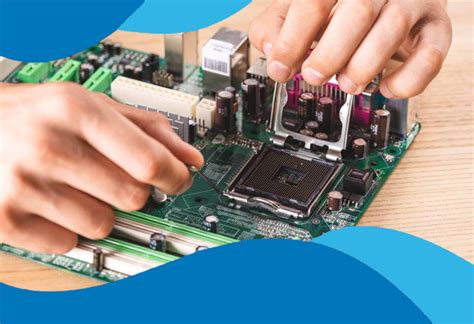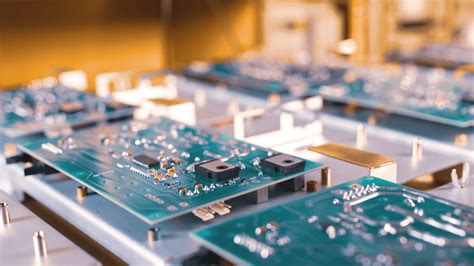The Evolution and Importance of PCB Assemblers in Modern Electronics
Introduction
Printed Circuit Board (PCB) assemblers are the backbone of the electronics manufacturing industry. They play a crucial role in transforming raw PCBs and electronic components into functional devices that power our modern world. From smartphones and computers to medical devices and automotive systems, PCB assemblers ensure that the intricate networks of circuits and components are correctly placed, soldered, and tested. This article delves into the world of PCB assemblers, exploring their evolution, the technologies they employ, their significance in electronics manufacturing, and the challenges they face in an ever-evolving industry.
1. The Role of PCB Assemblers
A PCB assembler is a specialized machine or system designed to place and solder electronic components onto a printed circuit board. The process involves several steps, including component placement, soldering, inspection, and testing. PCB assemblers are used in both small-scale prototyping and large-scale mass production, making them indispensable in the electronics manufacturing ecosystem.
The primary functions of a PCB assembler include:
- Component Placement: Accurately placing surface-mount devices (SMDs) and through-hole components onto the PCB.
- Soldering: Creating reliable electrical connections between components and the PCB using techniques like reflow soldering or wave soldering.
- Inspection and Testing: Ensuring the quality and functionality of the assembled PCB through automated optical inspection (AOI), X-ray inspection, and functional testing.

2. The Evolution of PCB Assemblers
The history of PCB assemblers is closely tied to the evolution of electronics manufacturing. In the early days of electronics, PCBs were assembled manually, with technicians placing components and soldering them by hand. This process was time-consuming, error-prone, and limited in scalability.
The advent of automated PCB assemblers in the mid-20th century revolutionized the industry. Early machines were rudimentary, capable of placing only a few components per minute. However, as technology advanced, so did the capabilities of PCB assemblers. The introduction of surface-mount technology (SMT) in the 1980s marked a significant milestone, enabling the placement of smaller, more densely packed components.
Today, modern PCB assemblers are highly sophisticated machines that incorporate advanced technologies such as machine vision, robotics, and artificial intelligence (AI). They can place thousands of components per hour with micron-level precision, ensuring high-quality and reliable assemblies.
3. Key Technologies in PCB Assemblers
Modern PCB assemblers rely on a range of cutting-edge technologies to achieve their high levels of performance and accuracy. Some of the most important technologies include:
- Machine Vision: High-resolution cameras and image processing algorithms enable PCB assemblers to accurately identify and place components, even at microscopic scales.
- Robotics: Precision robotic arms and pick-and-place systems allow for fast and accurate component placement.
- Reflow Soldering: This process uses controlled heating to melt solder paste, creating strong and reliable electrical connections.
- Automated Optical Inspection (AOI): AOI systems use cameras and software to detect defects such as misaligned components, solder bridges, or missing parts.
- X-Ray Inspection: For inspecting hidden connections, such as those in ball grid array (BGA) packages, X-ray systems provide a non-destructive way to ensure quality.
- Artificial Intelligence (AI): AI algorithms are increasingly being used to optimize assembly processes, predict potential defects, and improve overall efficiency.

4. The Importance of PCB Assemblers in Electronics Manufacturing
PCB assemblers are critical to the electronics manufacturing industry for several reasons:
- Precision and Accuracy: Modern electronic devices require extremely precise component placement and soldering. PCB assemblers can achieve levels of accuracy that are impossible to replicate manually.
- Scalability: Automated PCB assemblers enable the mass production of electronic devices, meeting the demands of global markets.
- Consistency: By automating the assembly process, PCB assemblers ensure consistent quality across thousands or even millions of units.
- Speed: High-speed PCB assemblers can place and solder components at incredible speeds, significantly reducing production times.
- Cost Efficiency: While the initial investment in PCB assemblers can be high, they ultimately reduce labor costs and minimize waste, leading to long-term savings.
5. Challenges Facing PCB Assemblers
Despite their many advantages, PCB assemblers face several challenges in today’s fast-paced and ever-changing electronics industry:
- Miniaturization: As electronic devices become smaller and more compact, PCB assemblers must adapt to handle increasingly tiny and complex components.
- High-Mix, Low-Volume Production: The growing demand for customized and specialized devices requires PCB assemblers to be flexible and capable of handling small production runs efficiently.
- Component Variability: The wide variety of electronic components, each with different shapes, sizes, and soldering requirements, poses a challenge for PCB assemblers.
- Quality Control: Ensuring the highest levels of quality and reliability is essential, especially in industries like aerospace and medical devices, where failures can have severe consequences.
- Sustainability: The electronics industry is under increasing pressure to adopt sustainable practices, including reducing waste and energy consumption in the assembly process.

6. The Future of PCB Assemblers
The future of PCB assemblers is shaped by ongoing advancements in technology and the evolving needs of the electronics industry. Some key trends and developments include:
- Increased Automation: The integration of AI and machine learning will enable PCB assemblers to become even more autonomous, with the ability to self-optimize and adapt to changing production requirements.
- 3D Printing: Additive manufacturing techniques, such as 3D printing, may complement traditional PCB assembly methods, enabling the creation of more complex and customized designs.
- Internet of Things (IoT): IoT-enabled PCB assemblers will be able to communicate with other machines and systems, creating smart factories that operate with greater efficiency and coordination.
- Sustainability Initiatives: PCB assemblers will increasingly incorporate eco-friendly practices, such as using lead-free solder and reducing energy consumption.
- Advanced Materials: The development of new materials, such as flexible and biodegradable substrates, will require PCB assemblers to adapt to new assembly techniques.
Conclusion
PCB assemblers are at the heart of the electronics manufacturing industry, enabling the production of the devices that power our modern world. From their humble beginnings as manual assembly processes to the highly automated and intelligent systems of today, PCB assemblers have come a long way. As technology continues to evolve, so too will the capabilities of PCB assemblers, ensuring that they remain a vital component of the electronics industry for years to come. Despite the challenges they face, PCB assemblers will continue to drive innovation, efficiency, and quality in the production of electronic devices, shaping the future of technology and society.
This article provides a comprehensive overview of PCB assemblers, their role in electronics manufacturing, and their future prospects. If you need further details or specific examples, feel free to ask!







